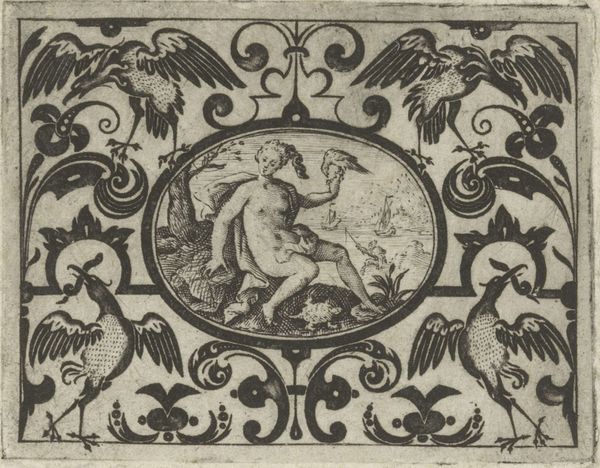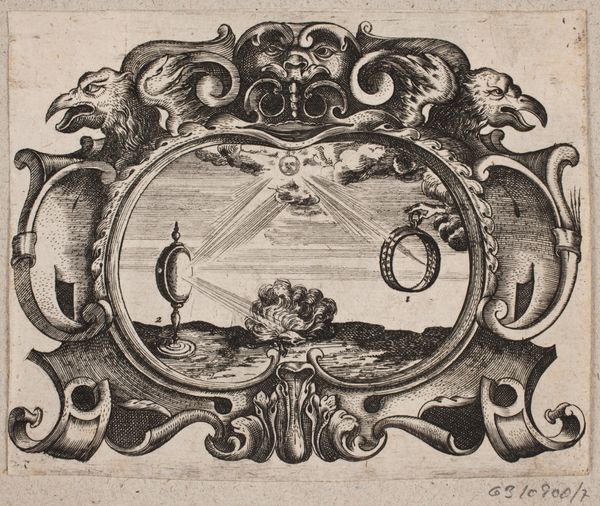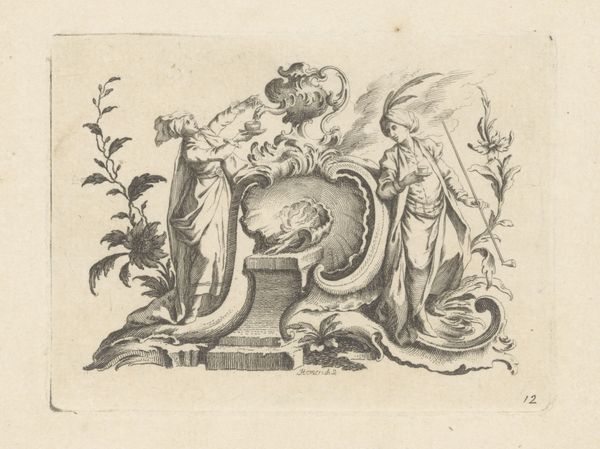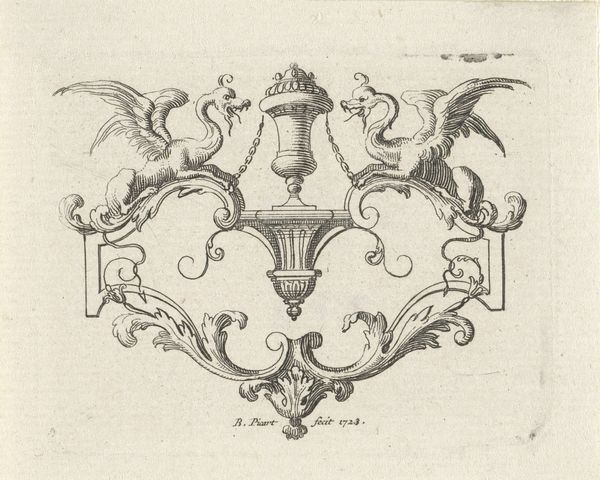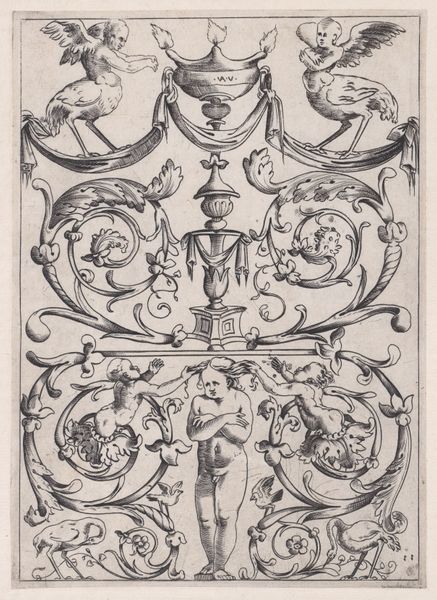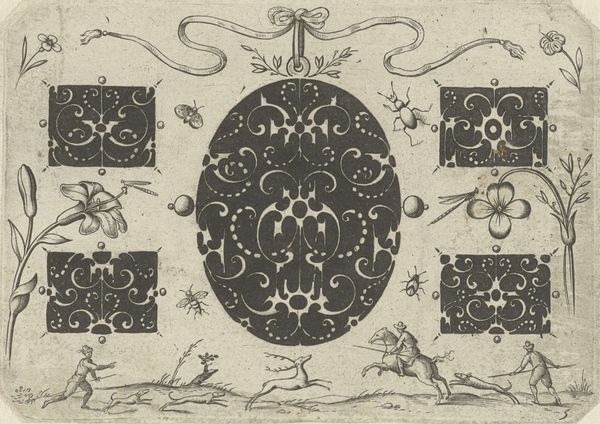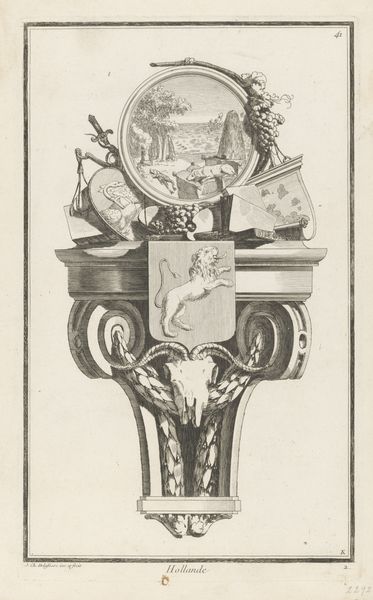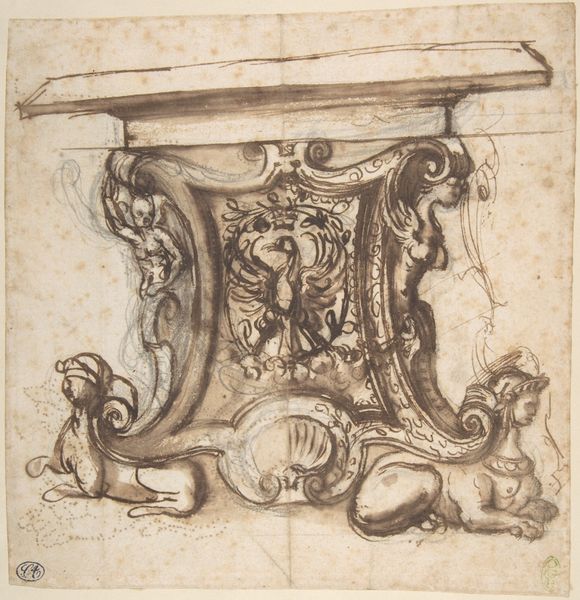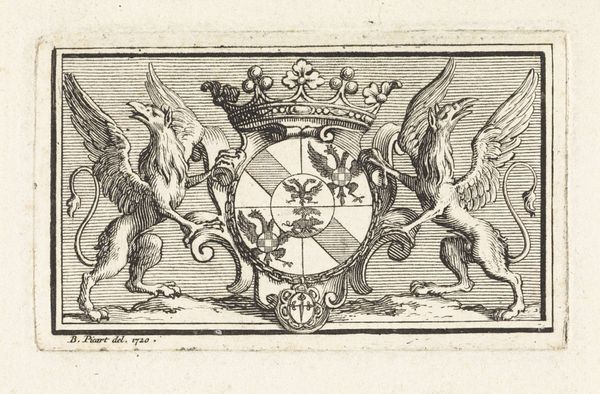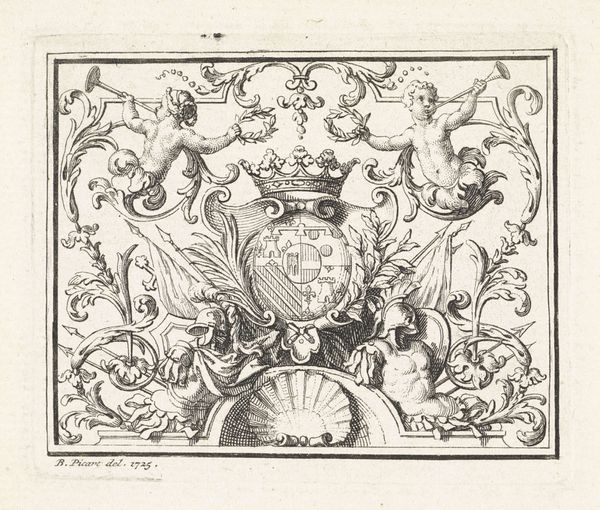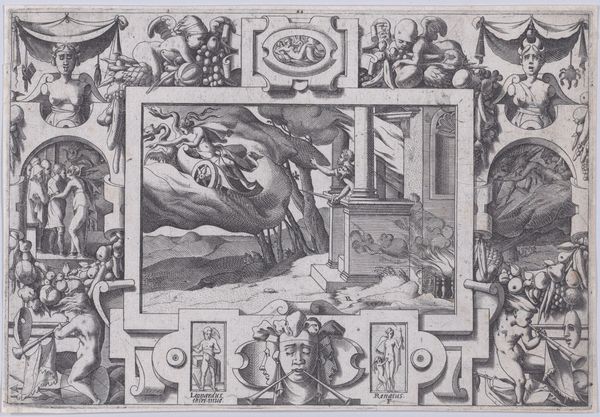
Tail-piece: Two Winged Women Hold a Cartel Decorated by Fame 1600 - 1688
0:00
0:00
drawing, print, engraving
#
drawing
#
allegory
#
baroque
# print
#
figuration
#
history-painting
#
engraving
Dimensions: sheet: 3 7/8 x 5 1/16 in. (9.9 x 12.8 cm)
Copyright: Public Domain
Editor: This artwork is "Tail-piece: Two Winged Women Hold a Cartel Decorated by Fame," made by Claude Mellan between 1600 and 1688. It's an engraving. The composition really strikes me, it’s so elaborate and ornamental. What compositional elements do you find most interesting? Curator: The balanced asymmetry is striking. Notice how the figures supporting the cartel, while mirroring each other, are not perfectly symmetrical in pose or drapery. This interplay creates a dynamic tension within a highly structured framework. And note the exquisite use of line; Mellan’s mastery lies in its capacity to render both form and texture with minimal cross-hatching. The density and direction of the lines define the figures and ornament. Do you see the difference in texture between the cartel background, rendered in a stipple-like fashion, and the smooth surfaces of the figures? Editor: Yes, I see it! The stippling creates depth. But the figures almost seem to be emerging from the decorative elements; their bodies blend in with the leaves below. Is this contrast intentional? Curator: Undoubtedly. This ambiguous merging blurs the boundaries between the human form and pure ornamentation, drawing attention to the constructed nature of representation. It asks us to consider how meaning is generated through the manipulation of line and form, independently of any narrative content. Consider how the composition could change by altering that small detail. Editor: So the work’s beauty isn't just decorative. It stems from how Mellan balances different elements within a tight structure to generate an intentional visual tension. Curator: Precisely. And focusing on how that balance of different formal aspects helps shape our experience. Editor: Thanks, seeing those structural choices, the visual tension really comes alive now.
Comments
No comments
Be the first to comment and join the conversation on the ultimate creative platform.
